Attendance 50,000 | ||
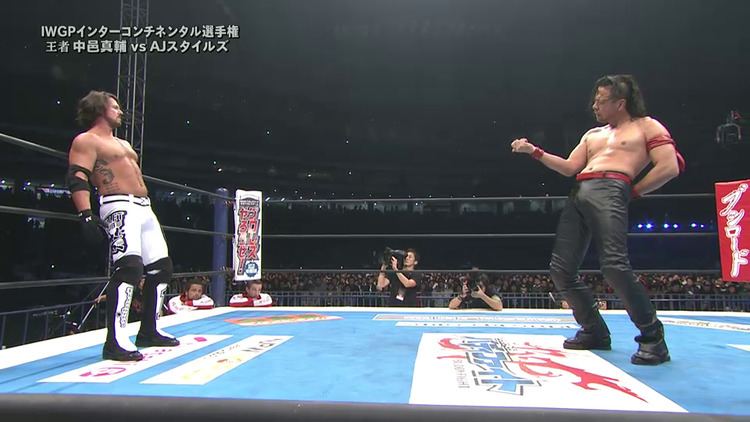 | ||
Promotion New Japan Pro Wrestling Date 000000001992-01-04-0000January 4, 1992 Super Warriors in Tokyo Dome Fantastic Story in Tokyo Dome | ||
Cody the american nightmare
The January 4 Tokyo Dome Show is a major professional wrestling show, held by Japanese professional wrestling promotion New Japan Pro Wrestling (NJPW), held annually on January 4 in the Tokyo Dome. NJPW often invites other promotions, Japanese and international, to participate in their January 4 Tokyo Dome Shows as well, including several companies that have been involved in scripted inter-promotional rivalries such as All Japan Pro Wrestling (AJPW), Big Japan Pro Wrestling (BJW), Pro Wrestling Zero1, Pro Wrestling Noah, and UWF International (UWFi) as well as representatives from the Mexican Consejo Mundial de Lucha Libre (CMLL) promotion. The shows have regularly featured wrestlers from American promotions such as Ring of Honor (ROH), Total Nonstop Action Wrestling (TNA), and World Championship Wrestling (WCW) and have on these occasions been shown either partially or in full in the American market.
Contents
- Cody the american nightmare
- New japan pro wrestling wrestle kingdom 11 coming january 13
- Super Warriors in Tokyo Dome
- Fantastic Story in Tokyo Dome
- Battlefield
- Battle 7
- Wrestling World 1996
- Wrestling World 1997
- Final Power Hall in Tokyo Dome
- Wrestling World 1999
- Wrestling World 2000
- Wrestling World 2001
- Wrestling World 2002
- Wrestling World 2003
- Wrestling World 2004
- Toukon Festival Wrestling World 2005
- Toukon Shidou Chapter 1
- Wrestle Kingdom in Tokyo Dome
- Wrestle Kingdom II in Tokyo Dome
- Wrestle Kingdom III in Tokyo Dome
- Wrestle Kingdom IV in Tokyo Dome
- Wrestle Kingdom V in Tokyo Dome
- Wrestle Kingdom VI in Tokyo Dome
- Wrestle Kingdom 7 in Tokyo Dome
- Wrestle Kingdom 8 in Tokyo Dome
- References

It has become an annual event that starts the new year in NJPW since its inception in 1992. NJPW have held shows at the Tokyo Dome as far back as April 24, 1989, but their January 4 show has become the most anticipated show on NJPW calendar. It is Japan's biggest wrestling event and NJPW's premier show, similar to what the WrestleMania is for the WWE. The first two January 4 Tokyo Dome Shows were also the last two WCW/New Japan Supershows. Since 2007, when the event was renamed "Wrestle Kingdom in Tokyo Dome", the Dome shows have been broadcast on pay-per-view (PPV). As of 2017 all the Dome shows have featured championship matches, including several titles not owned by NJPW. On three occasions (1998, 2006 and 2013), no titles changed hands during the show. The 1993 Tokyo Dome show set the attendance record with 63,500 fans packing the Tokyo Dome, while the 2007 Dome show drew the lowest gates with only 18,000 in attendance. As of 2017, the January 4 shows have hosted 282 matches (not including dark or pre-show matches), 94 of which were title matches leading to 44 title changes in total. The 2005 Tokyo Dome show had a 16 match card, the largest of any of the shows, while 2001, 2002, 2007, 2013, and 2016 featured 9 matches, the lowest number of matches on a show.
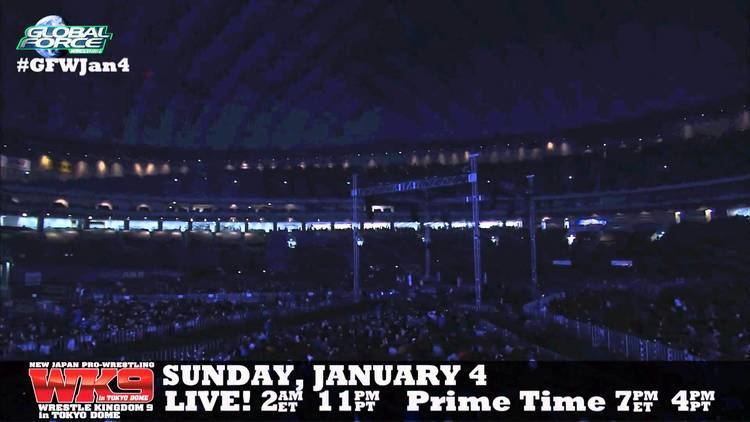
New japan pro wrestling wrestle kingdom 11 coming january 13
Super Warriors in Tokyo Dome
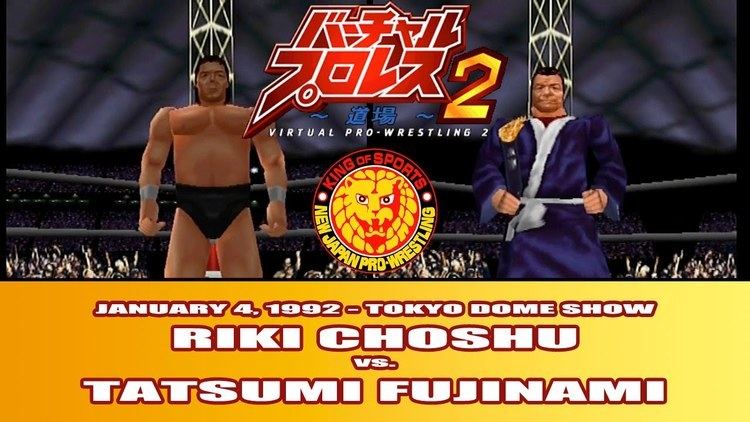
The first ever January 4 Tokyo Dome show held by New Japan Pro Wrestling (NJPW) was called Super Warriors in Tokyo Dome and would start the tradition of NJPW holding their biggest show of the year on January 4 in the Tokyo Dome, making it their Super Bowl or WrestleMania event. It was promoted in conjunction with the American-based World Championship Wrestling (WCW). The show featured a mixture of NJPW and WCW wrestlers facing each other, with most of the matches that included WCW wrestlers being shown in North America as a PPV under the name WCW/New Japan Supershow II. The show drew 50,000 spectators for a gate of the equivalent of $3,700,000 at the exchange rate at the time. The show featured 12 matches, including two dark matches, matches held before the PPV broadcast began. Six of the twelve bouts featured wrestlers from WCW. On the show Lex Luger successfully defended his WCW World Heavyweight Championship against Masahiro Chono, while the main event saw Riki Choshu defeated Tatsumi Fujinami. The match unified the Greatest 18 Championship and the IWGP Heavyweight Championship. Japanese heavy metal band Show-Ya performed live music between matches and performed theme music for a match where The Great Muta and Sting wrestled The Steiner Brothers.
Fantastic Story in Tokyo Dome
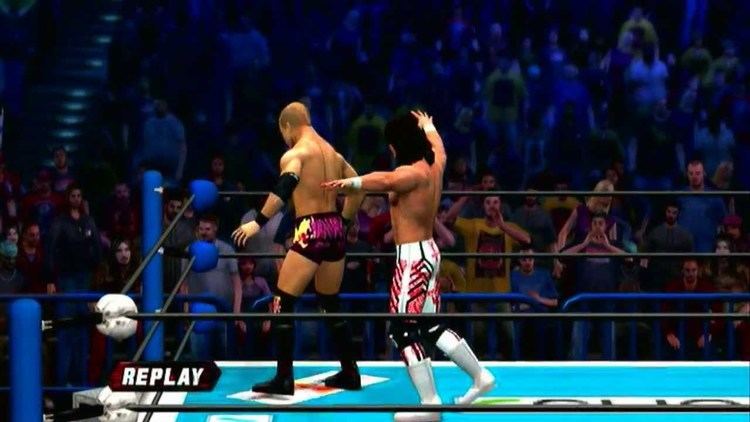
Fantastic Story in Tokyo Dome was the title of New Japan Pro Wrestling (NJPW)'s annual start of the year show that takes place on January 4 in the Tokyo Dome. The show drew 63,500 spectators and $3,200,000 in ticket sales. This was the second year that the show was co-promoted by the American World Championship Wrestling (WCW) promotion. The show was later shown on pay-per-view (PPV) in North America as WCW/New Japan Supershow III. The show featured 10 matches, including four matches that featured WCW wrestlers. Fantastic Story featured three title matches, including Jushin Thunder Liger defeating Último Dragón to win the IWGP Junior Heavyweight Championship. IWGP Heavyweight Champion The Great Muta defeating Masahiro Chono to win the NWA World Heavyweight Championship in a match where the IWGP title was also on the line. Finally the show featured an IWGP Tag Team Championship match between The Hell Raisers (Hawk Warrior and Power Warrior) and The Steiner Brothers (Rick and Scott) that ended without a definitive winner.
Battlefield
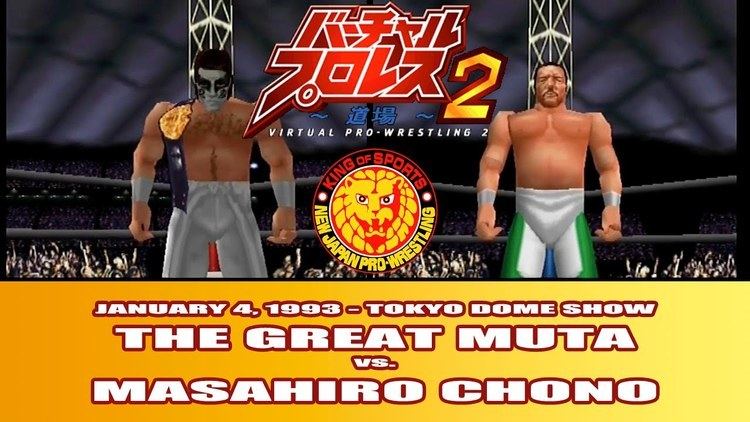
Battlefield was the title of New Japan Pro Wrestling (NJPW)'s annual start of the year show that takes place on January 4 each year in the Tokyo Dome. The show drew 48,000 spectators. Unlike the previous two years events the 1994 show was not billed as being co-promoted by World Championship Wrestling (WCW) although it did feature former WCW wrestlers The Steiner Brothers (Rick and Scott), who were working for WCW's rival, World Wrestling Federation (WWF), at the time. The show also featured Brutus Beefcake and Hulk Hogan before they began working with WCW, working freelance for NJPW for one night.
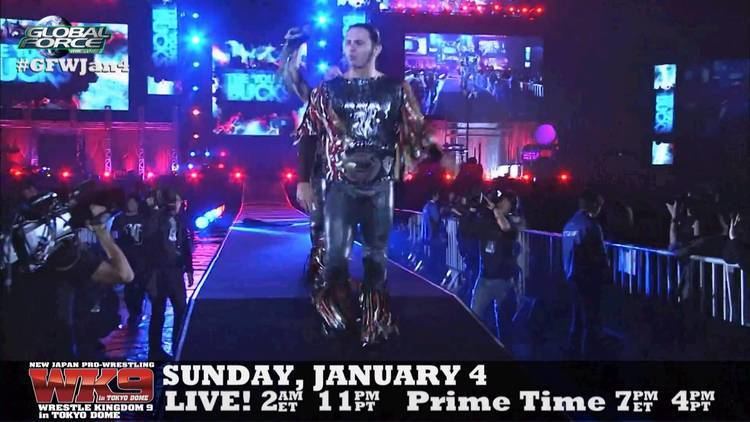
The show featured 11 matches in total, including two title matches that saw The Hell Raisers (Hawk and Power Warrior) defeat The Jurassic Powers (Hercules Hernandez and Scott Norton) to win the IWGP Tag Team Championship while Shinya Hashimoto successfully defended the IWGP Heavyweight Championship against Masahiro Chono. The show also featured a Mask vs. Mask match where Tiger Mask was unmasked and revealed as Koji Kanemoto. It would be several years before a new Tiger Mask, the fourth Tiger Mask began using the ring persona and not until after the turn of the millennia that the Tiger Mask character would appear in NJPW.
Battle 7
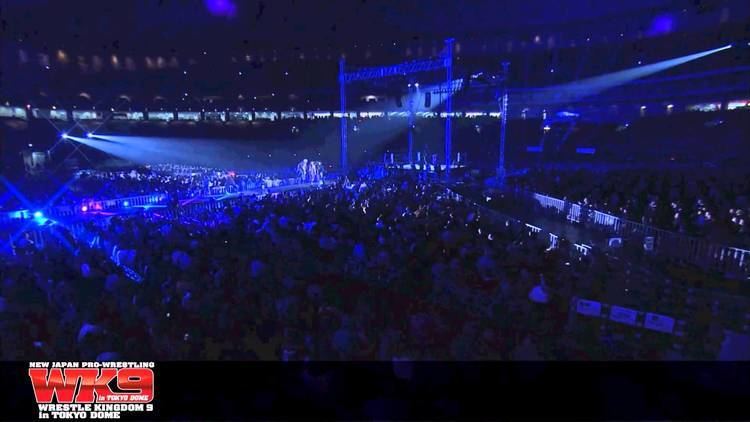
Battle 7 was the title of New Japan Pro Wrestling (NJPW)'s annual start of the year show that traditionally takes place on January 4 in the Tokyo Dome. Battle 7 was the fourth January 4 Tokyo Dome Show held by NJPW. The show drew 52,500 spectators and $4,800,000 in ticket sales. Besides NJPW Wrestlers the show also featured Sting from World Championship Wrestling and former WCW stars The Steiner Brothers (Rick and Scott) as well as freelance wrestlers Tiger Jeet Singh and Tiger Jeet Singh, Jr.. The show featured a four-man "Final Countdown BVD" tournament, named after NJPW sponsor BVD. The 1995 show marked the first time a non-NJPW title was defended as Shinjiro Otani defended the UWA World Welterweight Championship (originated in the Universal Wrestling Association in Mexico) against El Samurai.
Wrestling World 1996
Wrestling World 1996 was the title of New Japan Pro Wrestling (NJPW)'s annual start of the year show that traditionally takes place on January 4 in the Tokyo Dome. Wrestling World 1996 was the fifth January 4 Tokyo Dome Show held by NJPW. The show drew 54,000 spectators and $5,400,000 in ticket sales. The driving storyline behind the show was an "inter-promotional" rivalry between NJPW and UWF International (UWFi) which faced off in a series of three matches. Hiroshi Hase's retirement match against his former tag team partner Kensuke Sasaki was also part of the elaborate card. The main event of the show was IWGP Heavyweight Champion Keiji Mutoh losing the championship to UWFi representative Nobuhiko Takada. The undercard featured an additional title change as Jushin Thunder Liger defeated Koji Kanemoto to win the IWGP Junior Heavyweight Championship. In total the show consisted of 10 matches.
Wrestling World 1997
Wrestling World 1997 was the title of New Japan Pro Wrestling (NJPW)'s annual start of the year show that takes place on January 4 each year in the Tokyo Dome. The show drew 62,500 spectators and $5,000,000 in ticket sales. The show featured 12 matches, including four matches that were promoted jointly with the Big Japan Pro Wrestling promotion and presented as a rivalry between the two promotions. The show featured 12 matches in total, including three title matches, two of which saw new champions crowned.
The first match of the show was an eight-man tag team match which on one side featured Junji Hirata, Satoshi Kojima, Manabu Nakanishi and Osamu Nishimura going against Takashi Iizuka, Osamu Kido, Yuji Nagata and Kazuo Yamazaki. The contest lasted for 11:21 before Junji Hirata pinned Yuji Nagata after striking him with a lariat. This was the last match Nagata wrestled in Japan before travelling to the United States to work for World Championship Wrestling (WCW) as part of an "educational tour" that a lot of young Japanese wrestlers undertake to learn various styles of wrestling.
The second match of the night featured the debut of a character called "Super Liger", a silver and white version of Jushin Thunder Liger played by Chris Jericho. Super Liger wrestled Koji Kanemoto in what Power Slam Magazine correspondent Rob Butcher called "A super aerial battle". Super Liger won after 11 minutes and 11 seconds of action by using a bridging tiger suplex to pin Kanemoto. NJPW intended to use "Super Liger" character as a storyline enemy of Jushin Thunder Liger, hoping to create a rivalry similar to the Tiger Mask vs. Black Tiger rivalry. However, the character was so poorly received that it was never used again.
In the third match freelancer Jinsei Shinzaki defeated longtime NJPW midcarder Michiyoshi Ohara after using the Nenbutsu powerbomb.
Matches four, five, six and seven featured a "New Japan Pro Wrestling vs. Big Japan Pro Wrestling" (BJW) premise as wrestlers representing the two companies wrestled against each other. In previous years NJPW had great success promoting "inter-promotional rivalries" against UWF International, only this time they were working with the much smaller BJW. In the first match Shinjiro Otani defeated Yoshihiro Tajiri after a flying heel kick in what was described as the best contest of the NJPW vs. BJW series. Kendo Nagasaki defeated Tatsutoshi Goto to even the score to 1–1. NJPW headliner Masahiro Chono made very short work of BJW wrestler Shoji Nakamaki, defeating him with a Yakuza kick in just over a minute. The final match of the series saw NJPW veteran Masa Saito defeat BJW president Shinya Kojika, who wrestled under the ring name The Great Kojika, to win the series 3 to 1.
Match number eight was billed as a Mixed Martial Arts match although it was still as predetermined as all the other matches of the night. NJPW founder Antonio Inoki took on Martial Artis Willie Williams in a rematch from a highly publicized match from 1980. In the end Inoki forced Williams to submit to a ground cobra twist after 4:19.
The ninth match of the evening was originally supposed be for nine championships in total, but at the last minute WCW had not allowed Último Dragón to put the WCW World Cruiserweight Championship on the line in the match, Dragón still defended the J-Crown Championship, a championship consisting of eight unified titles. His opponent of the night was Jushin Thunder Liger, the driving force behind NJPW's very successful Light Heavyweight division and multiple time IWGP Junior Heavyweight Championship holder, a belt that at the time was part of the J-Crown. Liger and Dragón had previously wrestled at the 1993 January 4 Tokyo Dome show called Fantastic Story in Tokyo Dome. After over 18 minutes of high flying wrestling Liger pinned Dragón following a Steiner Screwdriver to become the fourth J-Crown holder.
The storyline going into the tenth match of the evening was that of the first ever holders of the IWGP Tag Team Championship wanted "one last chance at the title that made them famous" before retirement. Fujinami and Kimura took on Hiroyoshi Tenzan and Masahiro Chono (who had already wrestled that night, albeit in a very short match) for the IWGP Tag Team Championship. While the age of the challengers prevented the match from being a good wrestling match the antics of Tenzan and Chono and the emotion of the challengers "last stand" created a match the crowd in the Tokyo Dome enjoyed. The end came after Tenzan accidentally hit his partner, allowing Fujinami to apply a dragon sleeper on Chono to force him to submit. With this victory Fujinami and Kimura became four-time tag team champions and the 29th overall champions.
The semi-main event of the evening was billed as a "battle of the alter egos" as Keiji Mutoh reverted to his "Great Muta" character and Kensuke Sasaki wrestled as "Power Warrior". While Mutoh and Sasaki tended to wrestle a more scientific style their face painted alter egos tended to brawl more. The match quickly turned into more of a brawl than a wrestling match with both participants using the ringside tables and a steel chair during the match. Power Warrior won after moving out of the way of a Moonsault from Muta allowing him to drive Muta into a table with his Northern Lights bomb for the victory.
The main event of the show featured the same "last stand" storyline that was used in the tag team title match as NJPW veteran Riki Choshu challenged Shinya Hashimoto for the IWGP Heavyweight Championship. In August, 1996 Choshu had surprisingly defeated Hashimoto during the 1996 G1 Climax tournament. Unlike their encounter in 1996 and unlike the tag team championship match the "legend" did not prevail in this match as Hashimoto pinned Choshu after a brainbuster following 18:04 of wrestling.
Final Power Hall in Tokyo Dome
Final Power Hall in Tokyo Dome was the title of New Japan Pro Wrestling (NJPW)'s annual start of the year show that takes place on January 4 in the Tokyo Dome each year. Final Power Hall in Tokyo Dome was the seventh January 4 Tokyo Dome Show held by NJPW. The show drew 62,500 spectators and $6,000,000 in ticket sales. One of the focal points of the show was the retirement of wrestling legend Riki Choshu, who would wrestle five times that night against select opponents in what was billed as the Riki Road Final Message 5, the completion of month-long "retirement tour" for Choshu. The show also featured successful defenses of the IWGP Junior Heavyweight Championship and the IWGP Heavyweight Championship, which made Final Power Hall in Tokyo Dome the first January 4 Tokyo Dome show to not have a single championship change hands. Besides the five Riki Road Final Message 5 matches the show featured eight additional matches.
Wrestling World 1999
Wrestling World 1999 was the title of New Japan Pro Wrestling (NJPW)'s annual start of the year show that takes place on January 4 in the Tokyo Dome each year. Wrestling World 1999 was the eight January 4 Tokyo Dome Show held by NJPW. The show drew 52,500 spectators and $5,300,000 in ticket sales. The show featured 10 matches in total including four championship matches, three of which saw the championship change hands.
Wrestling World 2000
Wrestling World 2000 was the title of New Japan Pro Wrestling (NJPW)'s annual start of the year show that takes place on January 4 in the Tokyo Dome each year. Wrestling World 2000 was the ninth January 4 Tokyo Dome Show held by NJPW. The show drew 53,500 spectators and $5,900,000 in ticket sales. The event saw the return of World Championship Wrestling's Chris Benoit under the ring name Wild Pegasus, reprising the character he played for NJPW in the early to mid-1990s. The show also featured Rick Steiner and Randy Savage, both working as freelancers brought in specifically for the show. The twelve match card saw a successful defense of the IWGP Junior Heavyweight Tag Team Championship and the IWGP Junior Heavyweight Championship as well as Kensuke Sasaki defeating Genichiro Tenryu to win the IWGP Heavyweight Championship. The undercard featured a match between Masahiro Chono defeated Keiji Mutoh bearing a stipulation that the losing wrestler's faction would have to disband. Chono represented Team 2000, while Mutoh represented nWo Japan. Through Mutoh's loss nWo Japan ceased to be. It also featured the retirement match of Kazuo Yamazaki, as he wrestled his student, Yuji Nagata.
Wrestling World 2001
Wrestling World 2001 was the title of New Japan Pro Wrestling (NJPW)'s annual start of the year show that takes place on January 4 in the Tokyo Dome each year. Wrestling World 2001 was the tenth January 4 Tokyo Dome Show held by NJPW. The show drew 52,000 spectators. The focal point of Wrestling World 2001 was a tournament to crown a new IWGP Heavyweight Champion, which accounted for five of the nine matches on the show. No other championships were defended in 2001, marking the first year that only one title was on the line. The show saw Toshiaki Kawada wrestle twice; Kawada had previously been one of the main event wrestlers of NJPW's biggest rival All Japan Pro Wrestling.
Wrestling World 2002
Wrestling World 2002 was the title of New Japan Pro Wrestling (NJPW)'s annual start of the year show that takes place on January 4 in the Tokyo Dome each year. Wrestling World 2002 was the eleventh January 4 Tokyo Dome Show held by NJPW. The show drew 52,000 spectators. The show was the first January 4 Tokyo Dome Show to feature wrestlers from Pro Wrestling Noah, with the main event of the nine match show being a successful defense of the GHC Heavyweight Championship as champion Jun Akiyama defeated NJPW representative Yuji Nagata. The show also featured a successful IWGP Junior Heavyweight Championship defense by Kendo Kashin.
Wrestling World 2003
Wrestling World 2003 was the title of New Japan Pro Wrestling (NJPW)'s annual start of the year show that takes place on January 4 in the Tokyo Dome each year. Wrestling World 2003 was the twelfth January 4 Tokyo Dome Show held by NJPW. The show drew 30,000 spectators. The show featured the semi-finals and the finals of the "Young Generation Cup", an NJPW tournament for relative newcomers who have yet to establish themselves as top level wrestlers, which saw Ryushi Yanagisawa defeat Yutaka Yoshie to win the cup. The show featured a total of eleven matches, including a match for the vacant NWF Heavyweight Championship that Yoshihiro Takayama won by defeating Tsuyoshi Kosaka. The main event was a successful defense of the IWGP Heavyweight Championship as champion Yuji Nagata defeated Josh Barnett.
Wrestling World 2004
Wrestling World 2004 was the title of New Japan Pro Wrestling (NJPW)'s annual start of the year show that takes place on January 4 in the Tokyo Dome each year. Wrestling World 2004 was the thirteenth January 4 Tokyo Dome Show held by NJPW. The show drew 40,000 spectators. Main event of the 15 match show was a unification match between IWGP Heavyweight Champion Shinsuke Nakamura and NWF Heavyweight Champion Yoshihiro Takayama. Nakamura won the match, retiring the NWF Championship after only being active for one year. The undercard saw NJPW mainstay Jushin Thunder Liger defeat Pro Wrestling Noah's Takashi Sugiura to win the GHC Junior Heavyweight Championship, marking the first time a Noah championship changed hands at a January 4 Tokyo Dome Show. Additionally Gedo and Jado successfully defended the IWGP Junior Heavyweight Tag Team Championship against Heat and Tiger Mask and Hiroshi Tanahashi retained the IWGP U-30 Openweight Championship against Yutaka Yoshie.
Toukon Festival: Wrestling World 2005
Toukon Festival: Wrestling World 2005 was the title of New Japan Pro Wrestling (NJPW)'s annual start of the year show that takes place on January 4 in the Tokyo Dome each year. Toukon Festival: Wrestling World 2005 was the fourteenth January 4 Tokyo Dome Show held by NJPW. The show drew 46,000 spectators. The undercard of the show featured an eight-man "submissions only" tournament which Ron Waterman won when he forced Yuji Nagata to submit in the finals. The show also saw Tiger Mask defeat Heat to win the IWGP Junior Heavyweight Championship and in the main event Shinsuke Nakamura defeated Hiroshi Tanahashi to win the IWGP U-30 Openweight Championship. The show also featured a unique "Dog Fight" match between Masahiro Chono, Riki Choshu and Hiroyoshi Tenzan. Chono defeated Chosu in the first match and as a result had to wrestle Tenzan in the next match.
Toukon Shidou Chapter 1
Toukon Shidou Chapter 1 was the title of New Japan Pro Wrestling (NJPW)'s annual start of the year show that takes place on January 4 in the Tokyo Dome each year. Toukon Shidou Chapter 1 was the fifteenth January 4 Tokyo Dome Show held by NJPW. The show drew 31,000 spectators. The main focus of the 11 match show was the IWGP championship defenses in the semi-main event and the main event. In the semi-main event Masahiro Chono and Hiroyoshi Tenzan successfully defended the IWGP Tag Team Championship against Shiro Koshinaka and Takao Omori; while the main event featured Brock Lesnar retaining the IWGP Heavyweight Championship against Shinsuke Nakamura. For only the second time in the history of the January 4 Tokyo Dome Shows no title changed hands.
Wrestle Kingdom in Tokyo Dome
Wrestle Kingdom in Tokyo Dome was the title of New Japan Pro Wrestling (NJPW)'s annual start-of-the-year show that takes place on January 4 in the Tokyo Dome each year. Wrestle Kingdom in Tokyo Dome was the sixteenth January 4 Tokyo Dome Show held by NJPW. The show drew 18,000 spectators, the lowest number of any of the January 4 Tokyo Dome Shows. This was the first show that was billed as being co-promoted with NJPW's old rival All Japan Pro Wrestling, indicating that relationship between the former rivals had turned amicable after former NJPW main eventer Keiji Mutoh had taken over as president of AJPW. The multi-man tag team match on the card featured mixed teams with NJPW and AJPW wrestlers teaming with each other, showing that it was a collaboration and not a "rivalry" between the two promotions. The semi-main events featured successful defenses of both the Triple Crown Heavyweight Championship and the IWGP Heavyweight Championship while the main event reunited the teams of Masahiro Chono and Keiji Mutoh as well as Satoshi Kojima and Hiroyoshi Tenzan, both multiple time holders of the IWGP Tag Team Championship. At the end of the card, Chono and Mutoh paid tribute to their fallen Musketeer, Shinya Hashimoto.
Wrestle Kingdom II in Tokyo Dome
Wrestle Kingdom II in Tokyo Dome was the title of New Japan Pro Wrestling (NJPW)'s annual start of the year show that takes place on January 4 in the Tokyo Dome each year. Wrestle Kingdom II in Tokyo Dome was the seventeenth January 4 Tokyo Dome Show held by NJPW. The show drew 20,000 spectators. The 2008 show was the first year that NJPW used wrestlers from the Orlando, Florida based Total Nonstop Action Wrestling competing against wrestlers from NJPW. The matches involving the TNA wrestlers was shown as a special broadcast in the United States under the title Global Impact! and was later released on a DVD with other TNA/NJPW matches. TNA wrestlers featured in six of the ten matches, including Kurt Angle's successful defense of the IGF's version of the IWGP World Heavyweight Championship (known as the IWGP Third Belt Championship in NJPW) against Yuji Nagata. The show also featured All Japan Pro Wrestling president Keiji Mutoh reprising his role as "The Great Muta", a character that first became popular when he worked for NJPW.
Wrestle Kingdom III in Tokyo Dome
Wrestle Kingdom III in Tokyo Dome was the title of New Japan Pro Wrestling (NJPW)'s annual start of the year show that takes place on January 4 in the Tokyo Dome each year. Wrestle Kingdom III in Tokyo Dome was the eighteenth January 4 Tokyo Dome Show held by NJPW. The show drew 27,500 spectators. 2009 was the second year in a row in which Total Nonstop Action Wrestling wrestlers competed at NJPW's January 4 Tokyo Dome Show, and like the previous year's matches those matches were shown in the United States under the title Global Impact and released on DVD later on. The show was the first time in several years that featured luchadores from the Mexican Consejo Mundial de Lucha Libre (CMLL). In addition the show featured several wrestlers working for NJPW rivals Pro Wrestling Noah, Pro Wrestling Zero1 and All Japan Pro Wrestling. The show featured 10 matches in total, including four title changes and the successful defense of Zero1's World Heavyweight Championship.
Wrestle Kingdom IV in Tokyo Dome
Wrestle Kingdom IV in Tokyo Dome was the title of New Japan Pro Wrestling (NJPW)'s annual start of the year show that takes place on January 4 in the Tokyo Dome each year. Wrestle Kingdom IV in Tokyo Dome was the nineteenth January 4 Tokyo Dome Show held by NJPW. The show drew 41,500 spectators. 2010 was the third year in a row in which wrestlers from the Orlando, Florida based Total Nonstop Action Wrestling (TNA) appeared on the show. For the second year in a row it also featured luchadores from the Mexican Consejo Mundial de Lucha Libre (CMLL) promotion in addition to wrestlers from Japanese promotions Pro Wrestling Noah and Pro Wrestling Zero1. One of the focal points of the event was a four match inter-promotional "NJPW vs. Noah" series, which ended with two victories for each promotion. The event featured five title defenses including successful defenses of the GHC Heavyweight Championship and the IWGP Heavyweight Championship, the top titles in Noah and NJPW respectively. Wrestle Kingdom IV also saw the IWGP Tag Team Championship return to Japan after being defended in the United States throughout the previous year. In total 10 matches were presented.
Wrestle Kingdom V in Tokyo Dome
Wrestle Kingdom V in Tokyo Dome was the title of New Japan Pro Wrestling (NJPW)'s annual start of the year show that takes place on January 4 in the Tokyo Dome each year. Wrestle Kingdom V in Tokyo Dome was the twentieth January 4 Tokyo Dome Show held by NJPW and also included wrestlers from Total Nonstop Action Wrestling (TNA) and Consejo Mundial de Lucha Libre (CMLL) for the fourth and third year in a row, respectively. Wrestlers from DDT Pro-Wrestling, Pro Wrestling Noah and Pro Wrestling Zero1 also took part in the show. The card featured eleven matches, including four title matches and the first time that the TNA World Heavyweight Championship was defended in Japan. The show was attended by 42,000 people, the largest audience at a January 4 Tokyo Dome Show in six years.
Wrestle Kingdom VI in Tokyo Dome
Wrestle Kingdom VI in Tokyo Dome was announced on September 12, 2011, as taking place on January 4, 2012, in Tokyo Dome, celebrating the 40th anniversary of New Japan Pro Wrestling (NJPW). Wrestle Kingdom VI in Tokyo Dome was the twenty-first January 4 Tokyo Dome Show held by NJPW. The event featured outside participants from the All Japan Pro Wrestling (AJPW), Consejo Mundial de Lucha Libre (CMLL) and Pro Wrestling Noah promotions. For the first time in five years, the event did not feature wrestlers from Total Nonstop Action Wrestling (TNA). The card featured eleven matches, including three title matches.
Wrestle Kingdom 7 in Tokyo Dome
Wrestle Kingdom 7 in Tokyo Dome (subtitled "Evolution") was announced on February 29, 2012, as taking place on January 4, 2013, at the Tokyo Dome. Wrestle Kingdom 7 in Tokyo Dome was the twenty-second January 4 Tokyo Dome Show held by New Japan Pro Wrestling. The event featured outside participation from All Japan Pro Wrestling (AJPW) representative Keiji Mutoh, Pro Wrestling Zero1 representative Shinjiro Otani, and American freelancer Shelton Benjamin. Originally, Zero1's Daichi Hashimoto was announced as taking part in the event, but on December 27 it was announced that he had fractured his left forearm and would be replaced by Zero1 president Shinjiro Otani. For the first time in five years, the event did not feature wrestlers from Consejo Mundial de Lucha Libre (CMLL). For the first time, the event was made available for international market on internet pay-per-view. The event drew 29,000 fans to the Tokyo Dome, supposedly down from the three previous years, though, it should be noted that New Japan president Naoki Sugabayashi revealed that for the first time, the promotion announced a legitimate number of tickets sold instead of a "papered" number of attendees.
Wrestle Kingdom 8 in Tokyo Dome
Wrestle Kingdom 8 in Tokyo Dome was announced on January 23, 2013, as taking place on January 4, 2014, at the Tokyo Dome. Wrestle Kingdom 8 in Tokyo Dome was the twenty-third January 4 Tokyo Dome Show held by New Japan Pro Wrestling. The event featured ten matches, six of which are contested for championships. For the first time in twenty years, the NWA World Heavyweight Championship was defended during the event with NWA representative Rob Conway defending against Satoshi Kojima. The event was headlined by a double main event; Shinsuke Nakamura defending the IWGP Intercontinental Championship against Hiroshi Tanahashi and Kazuchika Okada defending the IWGP Heavyweight Championship against the winner of the 2013 G1 Climax, Tetsuya Naito. A fan vote decided the order in which the two matches took place during the event; the Heavyweight Championship match went first and the Intercontinental Championship match was the final match of the event. The event also featured outside participation from Wrestle-1 representative Keiji Mutoh, who worked under his Great Muta character. The event also featured appearances by Harley Race, Marty Friedman and Stan Hansen.
